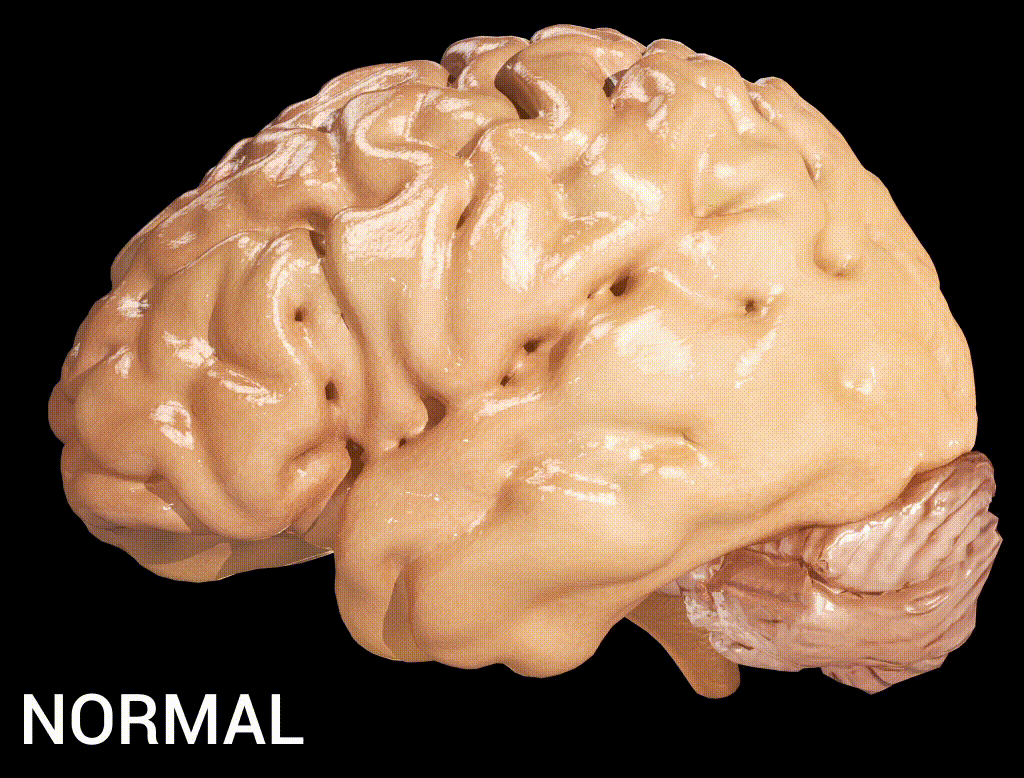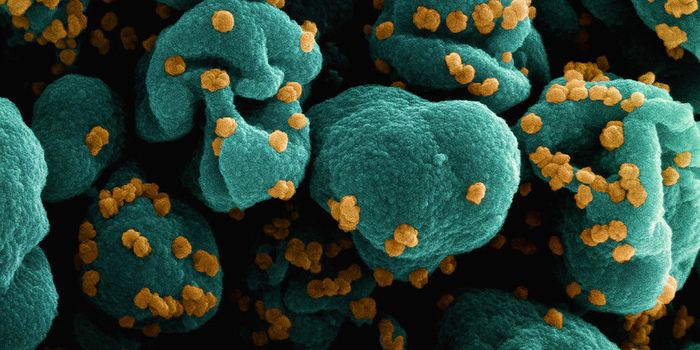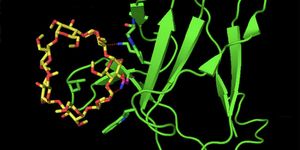Studying Bacteria in the Brains of Alzheimer's Patients
It's been known since around 2013 that we apparently have bacteria living in our brains, but there is very little that's known about them. When scientists examined post-mortem brains of patients with Alzheimer’s disease using DNA sequencing, they detected bacterial populations of increased size, and in proportions that were different from healthy brains. This research supports the idea that bacterial infections, and the resulting inflammation, could be contributing to the development of Alzheimer’s disease. The findings have been reported in Frontiers in Aging Neuroscience.
 In the gif above from Doctor Jana/Wikimedia, there is marked cortical atrophy in Alzheimer's Disease, associated with loss of gyri and sulci in the temporal lobe and parietal lobe, and parts of the frontal cortex and cingulate gyrus.
In the gif above from Doctor Jana/Wikimedia, there is marked cortical atrophy in Alzheimer's Disease, associated with loss of gyri and sulci in the temporal lobe and parietal lobe, and parts of the frontal cortex and cingulate gyrus.
It is known is that the amyloid peptide builds up and a protein called tau aggregates in the brains of Alzheimer’s patients. Cognitive decline, and eventually death are the result. While Alzheimer's disease is characterized as a neurodegenerative disease, scientists are coming to find that inflammation plays a role.
"Alzheimer's brains usually contain evidence of neuroinflammation, and researchers increasingly think that this could be a possible driver of the disease, by causing neurons in the brain to degenerate," explained study author David Emery, a researcher from the University of Bristol in the UK.
Genetic risk factors could be playing a role in the inflammation seen in Alzheimer’s, but infection seems like a likely candidate as well. "Neuroinflammation in the brain may be a reaction to the presence of bacteria," says Emery.
The blood-brain barrier is an effective shield against invaders like bacteria, and it keeps our brain system safe. One genetic risk-factor for Alzheimer's could be weakening the blood vessels, causing vulnerabilities in that shield that may be allowing bacteria into the brain, where it can reproduce.
For this study, the scientists assessed the differences in bacterial populations of healthy brains versus those of Alzheimer’s disease patients. "Previous studies looking at bacteria in the Alzheimer's brain have primarily investigated specific bacterial species," said senior author Shelley Allen. "We wanted to use an unbiased method to obtain the fullest overview possible of the entire bacterial population in the Alzheimer's brain, and compare these results with those from a healthy aged brain."
Next generation sequencing was utilized to identify the bacterial species in donated brains; eight were affected with Alzheimer's, and six were healthy. "NGS technology allows millions of these DNA molecules to be sequenced at the same time, providing an unbiased overview of a complex bacterial population," noted Allen.
"Comparing the bacterial populations showed at least a tenfold higher ratio overall of Actinobacteria (mostly P. acnes) to Proteobacteria in the Alzheimer's brain compared with the healthy brain," said Emery.
"Unexpectedly, Alzheimer's brains gave on average an apparent 7-fold increase in bacterial sequences above that seen in the healthy brain," added Allen. "The healthy brains yielded only low levels of bacterial sequences, consistent with either a background signal or normal levels present in the blood stream in brain tissue."
Unfortunately, the NGS method cannot measure actual bacterial numbers; additional work is certainly needed before reaching firm conclusions about the relationship of bacteria and Alzheimer’s. "We need quantitative studies on the bacterial presence in the brain," says Allen. "Larger numbers of brain samples are required, and future studies should also investigate if bacteria are involved in other neurodegenerative diseases involving neuroinflammation."
The video above features a discussion on inflammation in Alzheimer’s disease.
Sources: AAAS/Eurekalert! Via Frontiers, Frontiers in Aging Neuroscience








